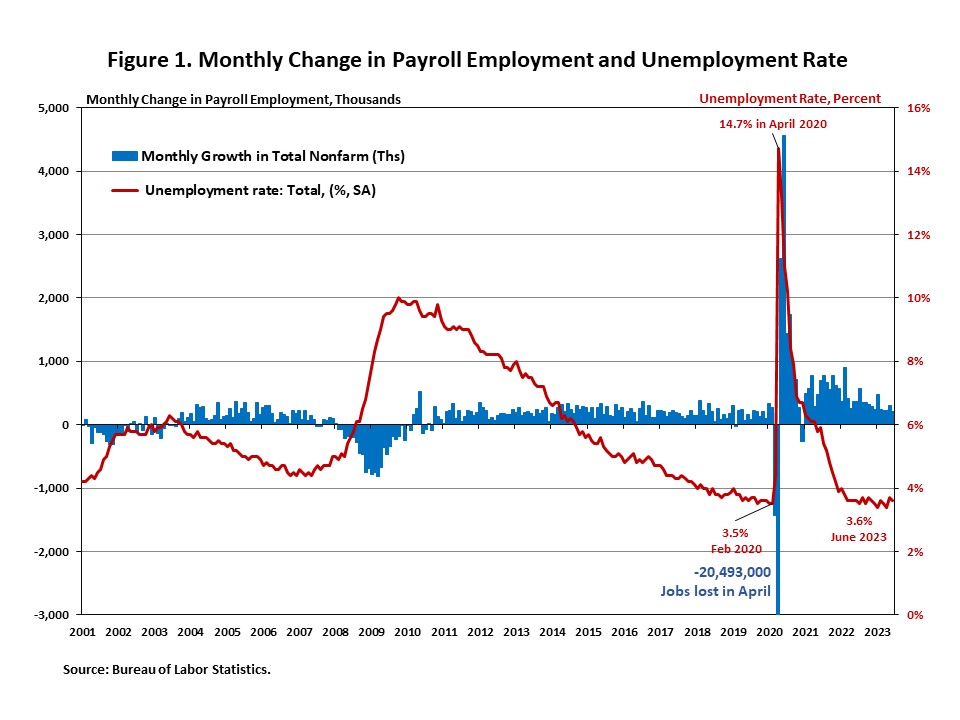Job gains slowed in June, but the labor market remained solid. Total payroll employment rose by 209,000 and the unemployment rate decreased to 3.6%. In June, wages grew at a 4.4% year-over-year growth rate, down 1.1 percentage points from a 5.5% gain in May 2022.

Total nonfarm payroll employment increased by 209,000 in June, following a gain of 306,000 in May, as reported in the Employment Situation Summary. The estimates for the previous two months were revised down. The estimate for April was revised down by 77,000 from +294,000 to +217,000, while the May increase was revised down by 33,000, from +339,000 to +306,000. Despite tight monetary policy, nearly 5.2 million jobs have been created since March 2022, when the Fed enacted the first interest rate hike. In the first six months of 2023, nearly 1.7 million jobs were created, and monthly employment growth averaged 278,000 per month.
The unemployment rate decreased by 0.1 percentage point to 3.6% in June. The number of unemployed persons decreased by 140,000, while the number of employed persons increased by 273,000.
Meanwhile, the labor force participation rate, the proportion of the population either looking for a job or already holding a job, was unchanged at 62.6% in June. Moreover, the labor force participation rate for people who aged between 25 and 54 rose to 83.5%. While the overall labor force participation rate is still below its pre-pandemic levels at the beginning of 2020, the rate for people who aged between 25 and 54 exceeds the pre-pandemic level of 83.1%.

For industry sectors, employment in government (+60,000), health care (+41,000), social assistance (+24,000), and construction (+23,000) continued to trend up in June.
Employment in the overall construction sector increased by 23,000 in June, the same gain as in May. While residential construction added 10,800 jobs, non-residential construction employment gained 12,200 jobs in June.
Residential construction employment now stands at 3.3 million in June, broken down as 929,000 builders and 2.3 million residential specialty trade contractors. The 6-month moving average of job gains for residential construction was 2,117 a month. Over the last 12 months, home builders and remodelers have added 52,400 jobs on a net basis. Since the low point following the Great Recession, residential construction has gained 1,289,400 positions.
In June, the unemployment rate for construction workers decreased by 0.2 percentage points to 3.6% on a seasonally adjusted basis. The unemployment rate for construction workers has been trending lower, after reaching 14.2% in April 2020, due to the housing demand impact of the COVID-19 pandemic.

Related


